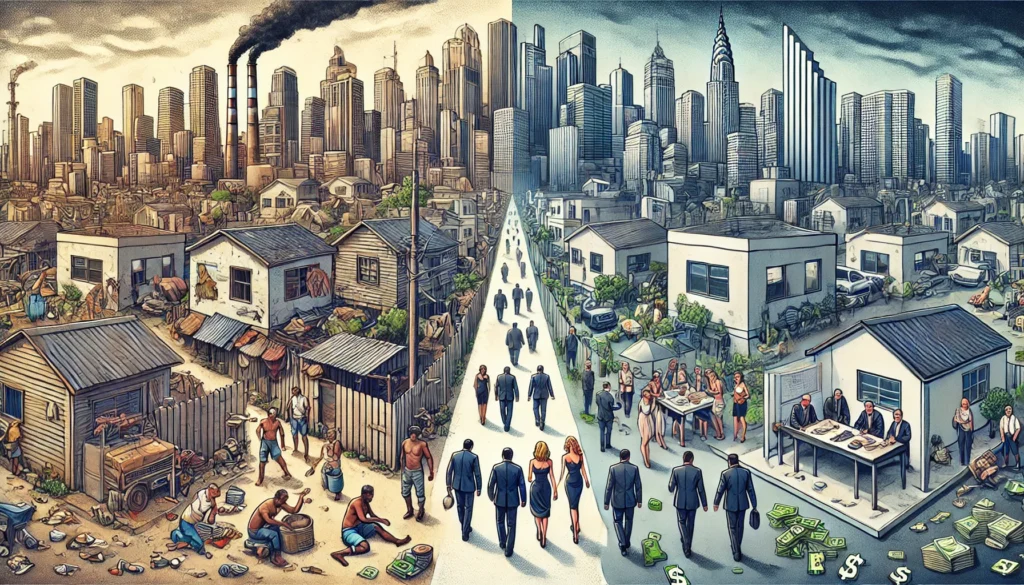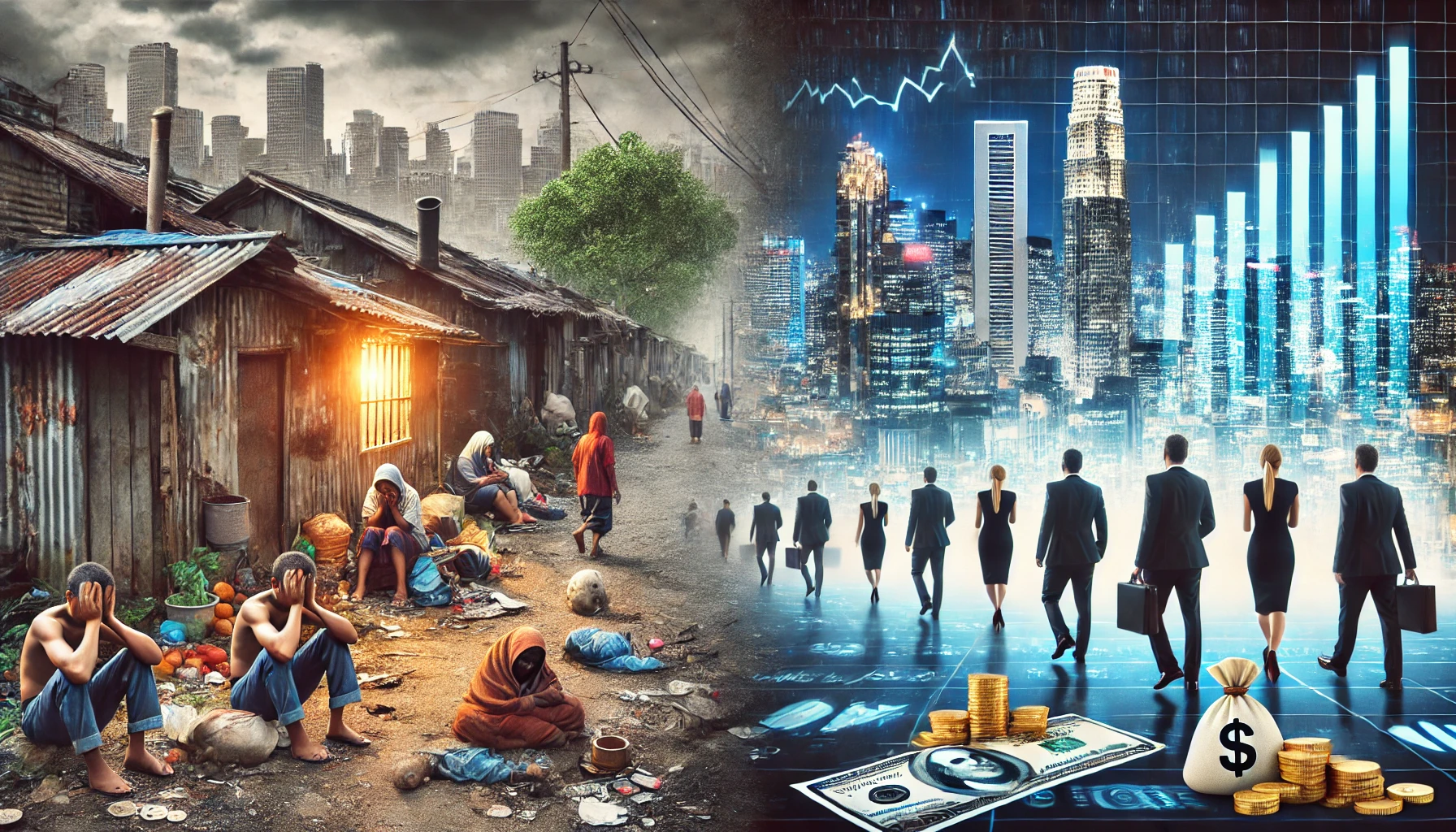Introduction
Economic status plays a pivotal role in shaping individual behavior, including tendencies toward criminal activity. Criminologists have long investigated how a person’s financial standing influences their likelihood to engage in crime. By understanding the link between economic status and criminal behavior, researchers can uncover critical insights into the roots of crime and its prevention. This article delves into how economic status affects criminality, the theories explaining this connection, and its implications for criminological research and policy.
Understanding Economic Status in Criminology
- Definition of Economic Status
Economic status refers to an individual’s or household’s financial position, often measured through income, employment, wealth, and access to resources. It determines one’s quality of life, social mobility, and access to opportunities. - Economic Status and Crime
- Individuals from low-income backgrounds may resort to crime as a means of survival or to bridge economic gaps.
- Conversely, individuals with higher economic status might engage in white-collar crimes, such as fraud or embezzlement, motivated by greed or power rather than necessity.
Theories Linking Economic Status and Crime
- Strain Theory
Robert Merton’s strain theory explains that societal goals, such as financial success, are universally desired. However, when legitimate means to achieve these goals are inaccessible, particularly for those with low economic status, individuals may turn to crime to achieve them. - Social Disorganization Theory
This theory argues that economically disadvantaged neighborhoods often lack the social structures needed to prevent crime, such as community support systems or effective law enforcement. - Rational Choice Theory
Criminal behavior is sometimes viewed as a rational decision. For individuals with limited economic resources, the perceived benefits of crime may outweigh the risks, making it a logical choice under their circumstances. - Conflict Theory
Rooted in Marxist thought, conflict theory emphasizes how economic inequality fosters tension between social classes. Lower economic status often correlates with systemic disadvantages, including biased law enforcement practices, which can push marginalized individuals into criminal activity.

Categories of Crime by Economic Status
- Crimes Committed by Low-Income Individuals
- Property Crimes: Theft, burglary, and robbery are common among individuals from economically disadvantaged backgrounds who may lack access to basic needs.
- Street-Level Crimes: Drug dealing and petty crimes often serve as survival mechanisms in impoverished areas.
- Crimes Committed by High-Income Individuals
- White-Collar Crimes: Fraud, tax evasion, and embezzlement are typically associated with individuals in higher economic positions. These crimes often involve exploiting financial systems for personal gain.
- Corporate Crimes: High-level executives may engage in illegal practices, such as insider trading, motivated by power and profit.
The Role of Economic Status in Criminal Profiling
- Economic Indicators and Risk Assessment
Criminal profiling often considers economic factors, such as employment history and financial stability, to assess an individual’s likelihood of engaging in criminal activity. - Economic Context in Recidivism
Low economic status is a significant predictor of recidivism. Former offenders with limited job opportunities and financial resources are more likely to re-offend. - Economic Mobility and Crime
Improving economic mobility through education, training, and job opportunities has been shown to reduce crime rates, particularly in high-risk populations.
Case Studies and Research Insights
- Poverty and Crime
Studies consistently show a strong correlation between poverty and property crimes. For example, neighborhoods with high poverty rates often experience elevated burglary and theft rates. - Inequality and Violence
Research highlights that economic inequality, rather than absolute poverty, is a stronger predictor of violent crimes. Countries with greater income disparity tend to report higher rates of homicides and assaults. - White-Collar Crime Statistics
Unlike property crimes, white-collar crimes often occur in contexts of high economic status, emphasizing that economic position influences not only the likelihood of crime but also its type.

Policy Implications
- Addressing Poverty and Inequality
Governments must focus on reducing poverty and narrowing income disparities through social welfare programs, job creation, and progressive taxation. - Rehabilitation Programs
Economic empowerment initiatives, such as skills training and financial counseling for former offenders, can reduce recidivism by improving their economic status. - Community Development
Investing in economically disadvantaged areas through education, infrastructure, and social services can significantly decrease crime rates.
Critiques and Limitations
- Oversimplification of Economic Status
While economic status is a significant factor, it cannot fully explain criminal behavior. Psychological, cultural, and situational factors also play essential roles. - Stereotyping and Bias
Emphasizing economic status in criminology can perpetuate stereotypes about low-income individuals being predisposed to crime, ignoring the diversity of circumstances and choices. - Global Variations
Economic factors influencing crime differ across cultures and countries, making it challenging to generalize findings universally.
Conclusion
The economic status of criminals is a crucial factor in understanding the motivations and types of crime they commit. While low economic status often drives individuals toward property or survival crimes, high economic status can lead to white-collar and corporate crimes. By addressing the root economic causes of crime, such as poverty and inequality, policymakers and criminologists can work toward more effective crime prevention strategies. Recognizing the multifaceted nature of economic status helps paint a comprehensive picture of its role in criminology and its broader societal implications.

